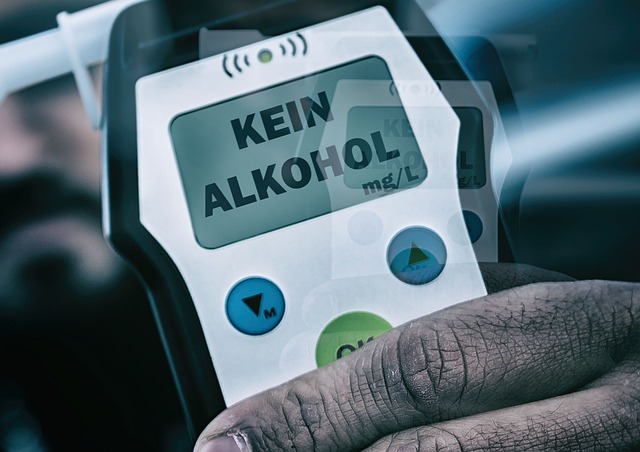Teen impaired driving remains a critical issue, but today's digital era offers innovative Tech Solutions for Impaired Driving. Advanced driver monitoring systems and mobile apps encourage responsible behavior and accountability. Virtual reality simulations provide safe practice in real-life scenarios, while data analytics personalize interventions based on risk factors. AI chatbots offer ongoing support, and technology enables personalized tracking and video conferencing for enhanced rehabilitation programs. These tech solutions aim to prevent accidents and cultivate a culture of safety among teenagers.
Teen rehabilitation for impaired driving is a critical area of focus in today’s digital age. Understanding the current landscape involves recognizing the rising trends among teenagers and the need for innovative solutions. This article explores powerful tech innovations aimed at transforming rehabilitation programs, from mobile apps promoting responsible decision-making to immersive virtual reality simulations. By leveraging data analytics and involving parents through technology, these tech solutions for impaired driving offer personalized interventions, ensuring teens stay on track and make safer choices.
- Understanding Teen Impaired Driving: The Current Landscape
- Tech Innovations in Rehabilitation Programs
- Mobile Apps for Responsible Decision-Making
- Virtual Reality: Simulating Safe Driving Scenarios
- Data Analytics for Personalized Interventions
- Parental Involvement and Support Through Technology
Understanding Teen Impaired Driving: The Current Landscape

Teen impaired driving is a pressing issue in today’s digital era, with tech solutions for impaired driving becoming increasingly important. According to recent statistics, teens aged 16-19 are at a higher risk of being involved in motor vehicle crashes compared to older age groups, and alcohol or drug use is often a contributing factor. The current landscape reveals a need for innovative approaches to address this problem.
Tech solutions play a pivotal role in reversing this trend. Advanced driver monitoring systems, for instance, can alert teens and their guardians when unsafe behavior, such as distracted driving or speeding, is detected. Additionally, mobile apps designed to promote responsible driving habits and educate teens about the dangers of impaired driving are gaining popularity. These tech-driven interventions not only help prevent accidents but also foster a culture of accountability and safety among teenagers.
Tech Innovations in Rehabilitation Programs

In today’s digital era, tech innovations are revolutionizing teen rehabilitation programs, especially those focused on addressing impaired driving. These advancements offer more personalized and engaging approaches to treatment. From virtual reality simulations that recreate real-life driving scenarios, helping teens practice safe habits in a controlled environment, to mobile apps that track progress and provide access to therapists on demand, technology is making interventions more accessible and effective.
Tech solutions for impaired driving go beyond entertainment and monitoring. Data analytics now play a crucial role in identifying patterns and risk factors, allowing for tailored interventions. Moreover, AI-powered chatbots assist teens in between sessions, offering immediate support and guidance while navigating challenges. These tech solutions not only enhance traditional rehabilitation methods but also foster a sense of accountability and empowerment among young individuals striving to stay on track.
Mobile Apps for Responsible Decision-Making

In today’s digital era, technology offers innovative solutions for various challenges faced by teenagers, including those recovering from impaired driving incidents. Mobile apps have emerged as powerful tools to support this rehabilitation process. These apps are designed to encourage responsible decision-making and promote positive behaviors. By providing interactive features and educational content, they can help teens stay focused on their recovery journey.
One such app might offer virtual simulations of real-life scenarios, teaching teens how to make quick, safe choices while driving. Another could include gamified elements, rewarding users for practicing defensive driving techniques or adhering to a sober lifestyle. These tech solutions for impaired driving aim to engage and motivate teenagers, making the learning process more enjoyable and effective.
Virtual Reality: Simulating Safe Driving Scenarios

In the realm of teen rehabilitation, especially for those facing charges related to impaired driving, innovative tech solutions are proving invaluable. One such solution is the use of virtual reality (VR) to simulate safe driving scenarios. This cutting-edge approach allows young drivers to experience realistic traffic situations in a controlled environment, enabling them to practice responsible driving habits without putting themselves or others at risk. By immersing themselves in these virtual environments, teens can learn to navigate challenging roads, react to sudden events, and make informed decisions—all while adhering to safety protocols.
The integration of VR into rehabilitation programs offers several advantages. It provides a cost-effective and engaging alternative to traditional driving lessons, making it more accessible for those with limited resources or apprehensions about real-world practice. Furthermore, virtual reality allows for detailed simulations tailored to specific scenarios, such as navigating through heavy traffic or dealing with adverse weather conditions, ensuring that teens are adequately prepared for various driving challenges they may encounter on the road.
Data Analytics for Personalized Interventions

In the realm of teen rehabilitation, especially for at-risk youth facing impaired driving issues, technology has emerged as a powerful ally. Data analytics plays a pivotal role in tailoring interventions to suit individual needs, acting as a game-changer in preventing reckless behavior on the roads. By analyzing vast datasets, including historical driving records, demographic information, and behavioral patterns, specialists can identify patterns indicative of potential hazards.
This personalized approach leverages tech solutions for impaired driving by offering targeted strategies. For instance, predictive models can anticipate which teens might be at higher risk based on various factors, allowing for proactive measures. Additionally, real-time tracking devices and mobile apps provide a safety net, monitoring behavior and offering immediate feedback, thereby fostering a culture of responsible driving among teenagers.
Parental Involvement and Support Through Technology

In the digital age, technology offers innovative solutions for teen rehabilitation, particularly in addressing issues related to impaired driving. Mobile apps and online platforms can facilitate parental involvement by providing real-time tracking and monitoring tools. These tech solutions enable parents to stay connected with their teens’ progress, ensuring compliance with rehabilitation programs and promoting safer behavior. For instance, GPS trackers and app-based systems allow parents to track their children’s location, access driving records, and receive alerts for any deviations from agreed-upon rules.
By leveraging these tech solutions for impaired driving, parents can actively participate in their teens’ recovery process. Video conferencing tools enable face-to-face conversations, fostering open communication and building trust. Additionally, online support groups and educational resources provide a network of peers and experts, offering guidance and encouragement throughout the rehabilitation journey. This blend of technology and parental involvement paves the way for a more effective and holistic teen rehabilitation program.
The future of teen rehabilitation for impaired driving looks promising with the integration of innovative tech solutions. By leveraging mobile apps, virtual reality simulations, data analytics, and parental support tools, we can create personalized interventions that effectively address the unique challenges faced by teens. These tech innovations not only enhance engagement but also offer practical, real-world scenarios to promote responsible decision-making. As these solutions continue to evolve, they hold the potential to revolutionize teen rehabilitation programs, ensuring safer roads for generations to come.






